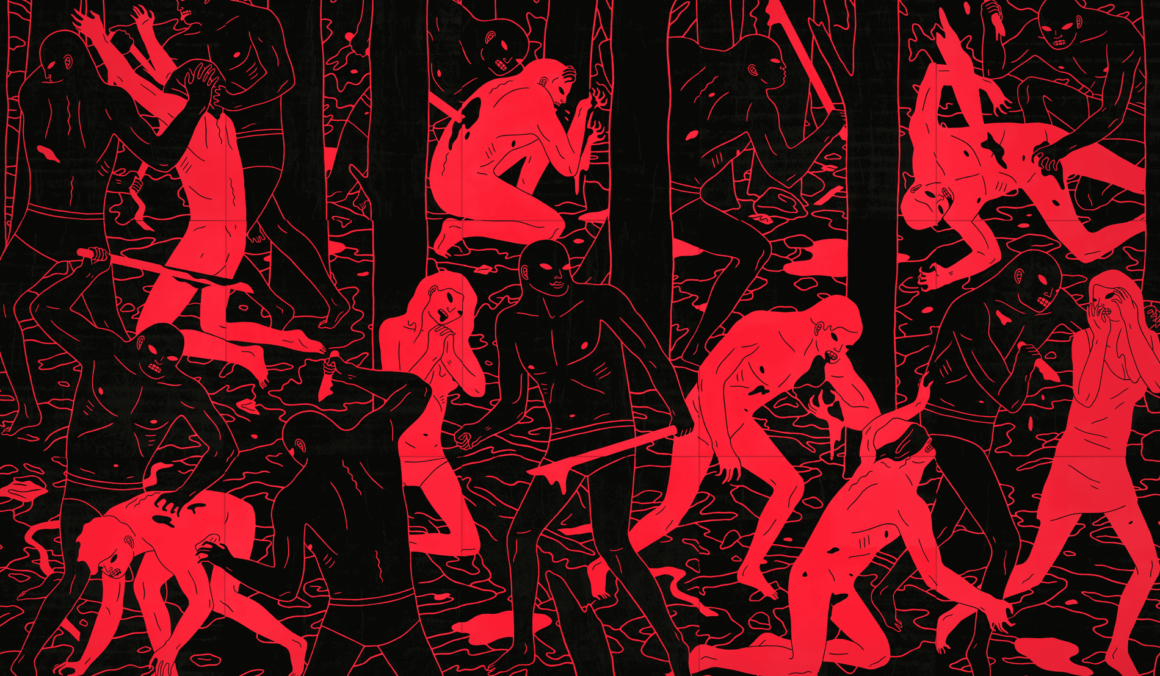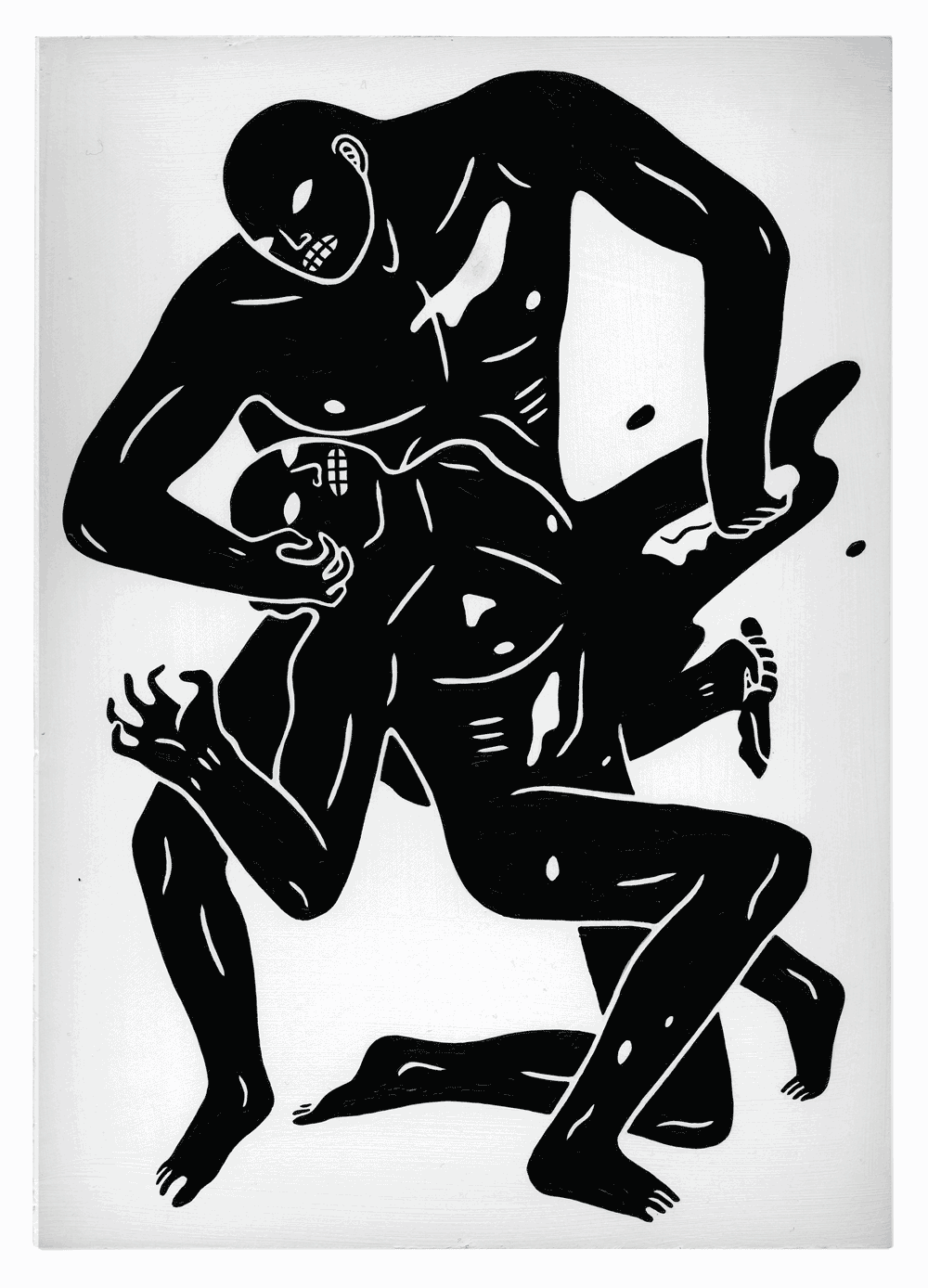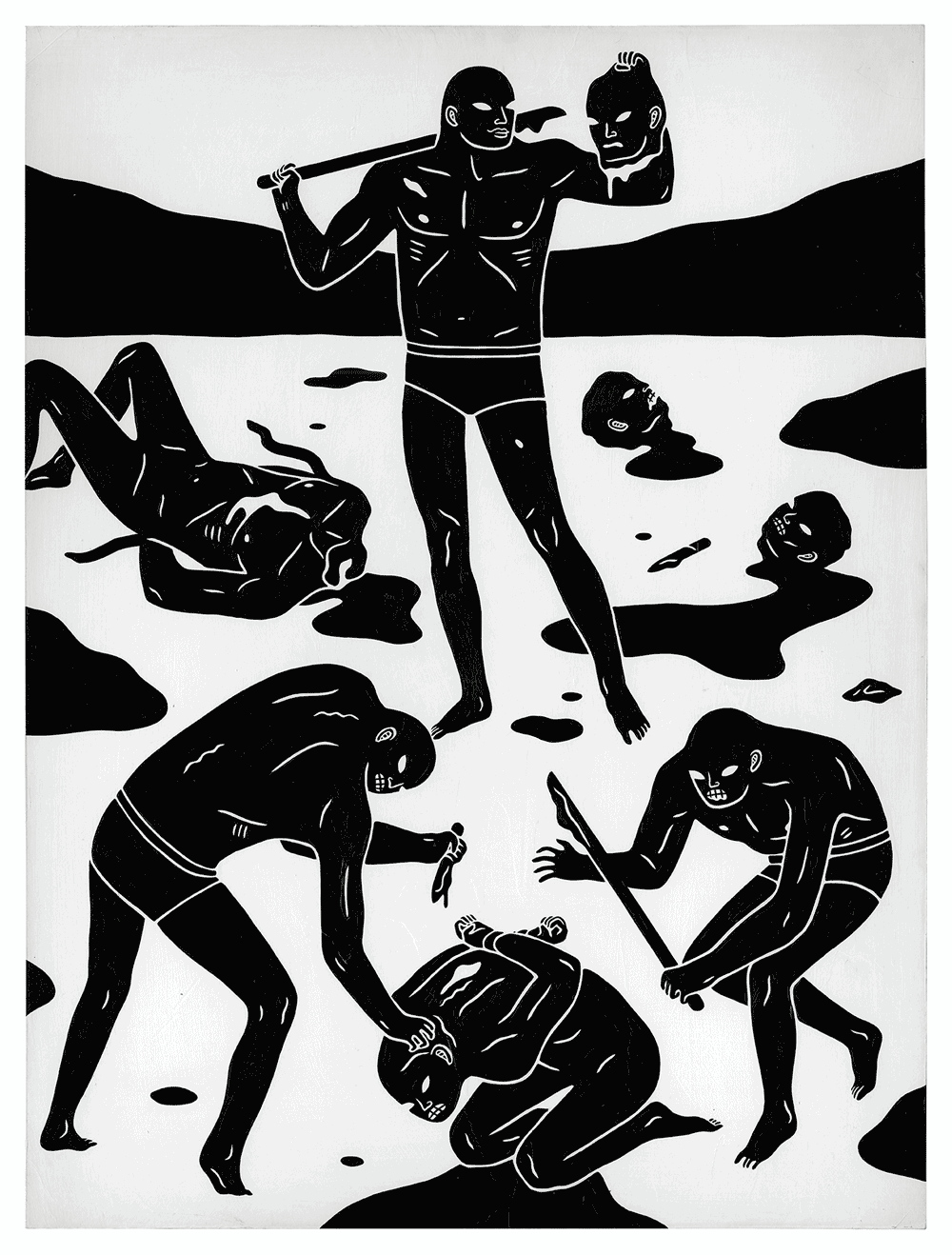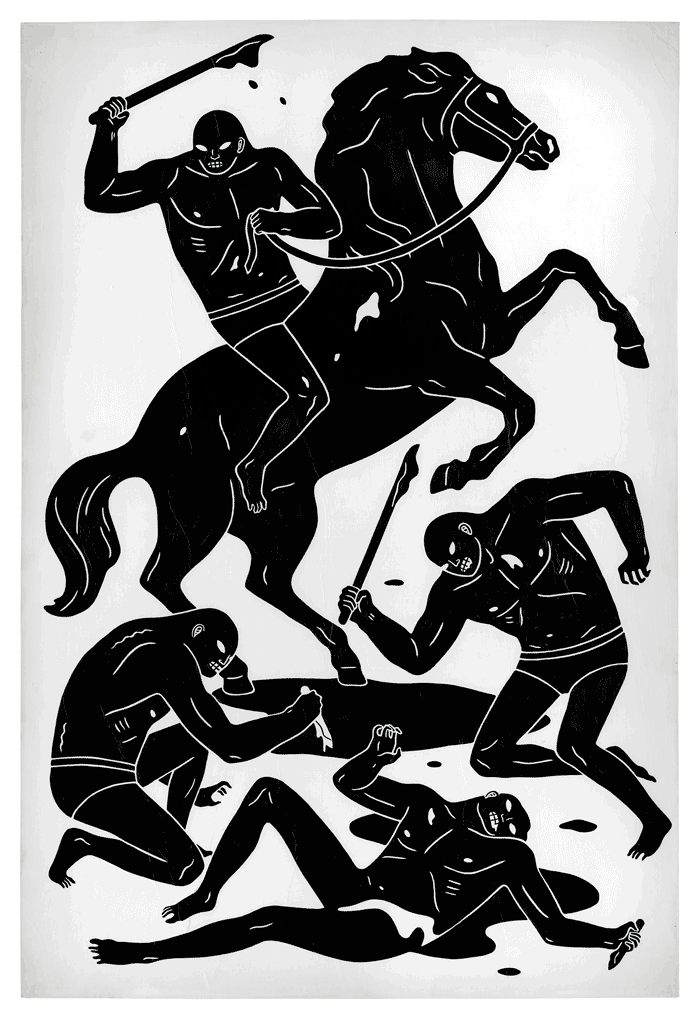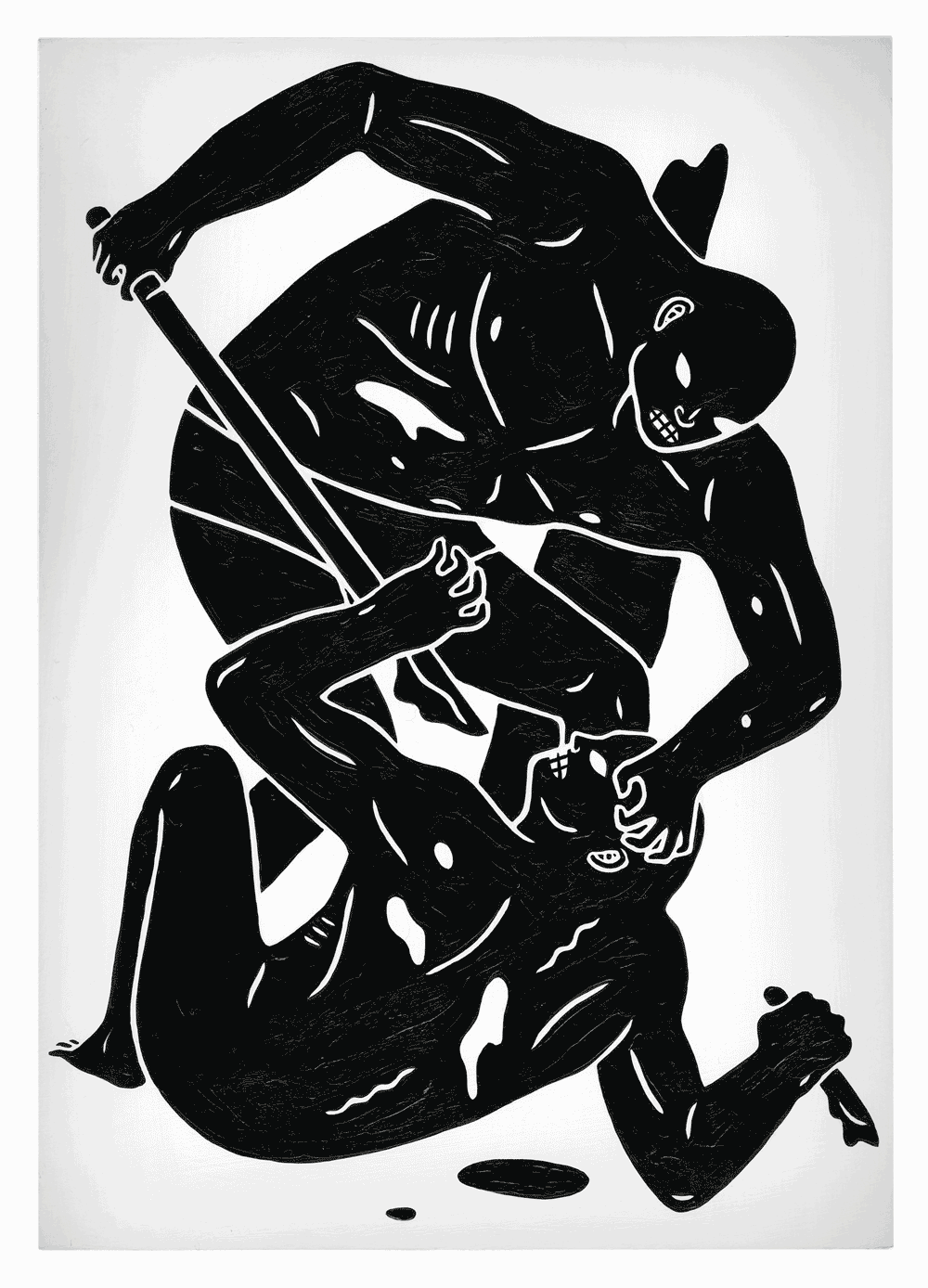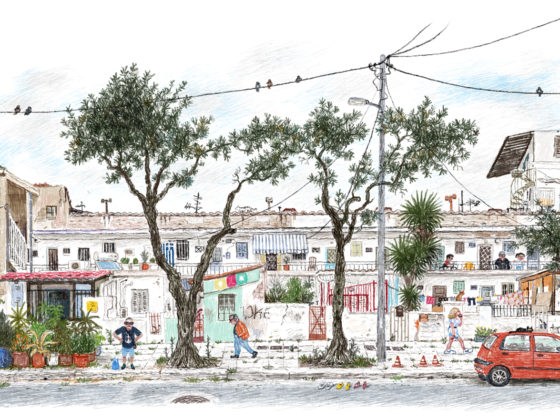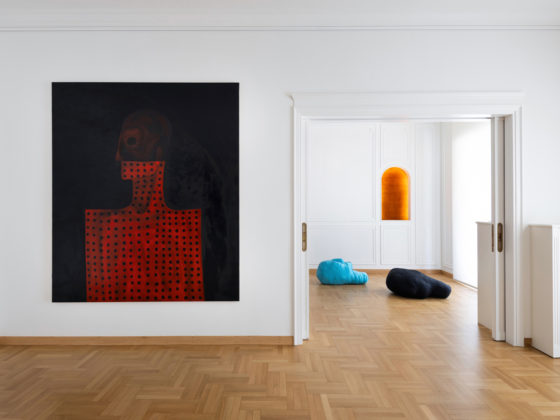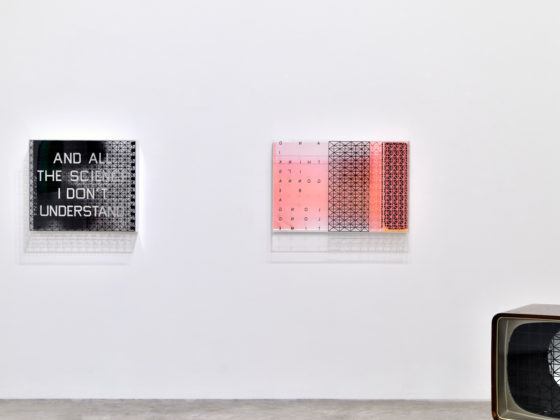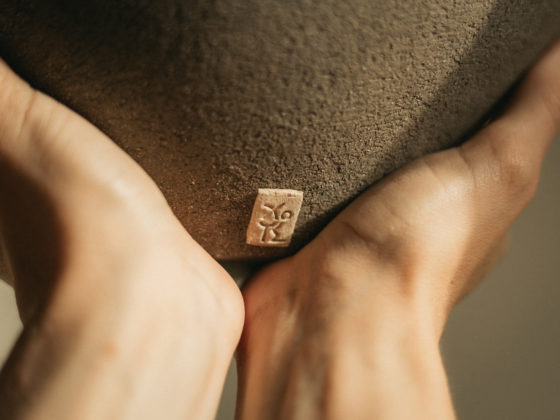In Cleon Peterson’s ‘End of Days’, violence is the status quo. Whatever days have ended, they have been succeeded by a new age of barbarism. The triumphant take no trophies, apart from the occasional severed head, but the defeated have clearly lost more than their viscera – they have lost all semblance of control, dignity, strength and, most of all, hope. The scenes of brutality are depicted in medias res, after the first blows were struck, in most cases not quite lethally. As the victims live to suffer, their tormenters seem to revel in that persistence. Acts of brutality, abuse and perversion serve as rituals of power, revealing narcissistic indulgences in violence, sex, religion and drugs. The figures are arranged in evocative narratives, resembling friezes of red figure or black figure vase paintings of ancient Greece, transported to the present day.
Over the years that he has depicted the shadows in his work, Peterson has often cited their genesis in the writings of Jung and Nietzsche, both of whom described the tension between the parts of the self that the psyche expresses and those it represses. In End of Days, the viewer is left to question what precipitating crimes could merit such grisly punishment. Currently living and working in Los Angeles, Cleon Peterson has presented his work in over 20 exhibits over the last decade including Los Angeles, Brussels and New York.
